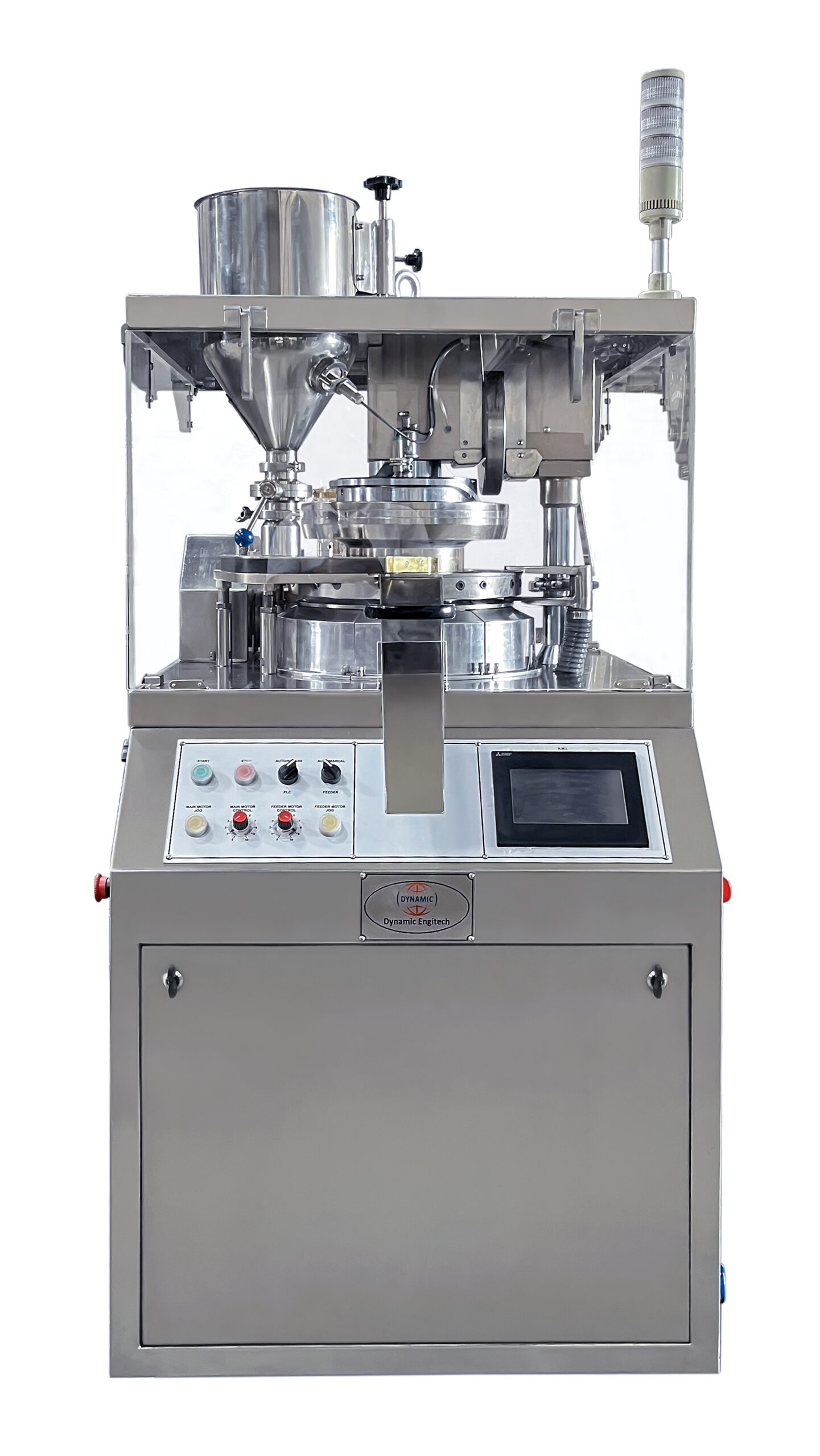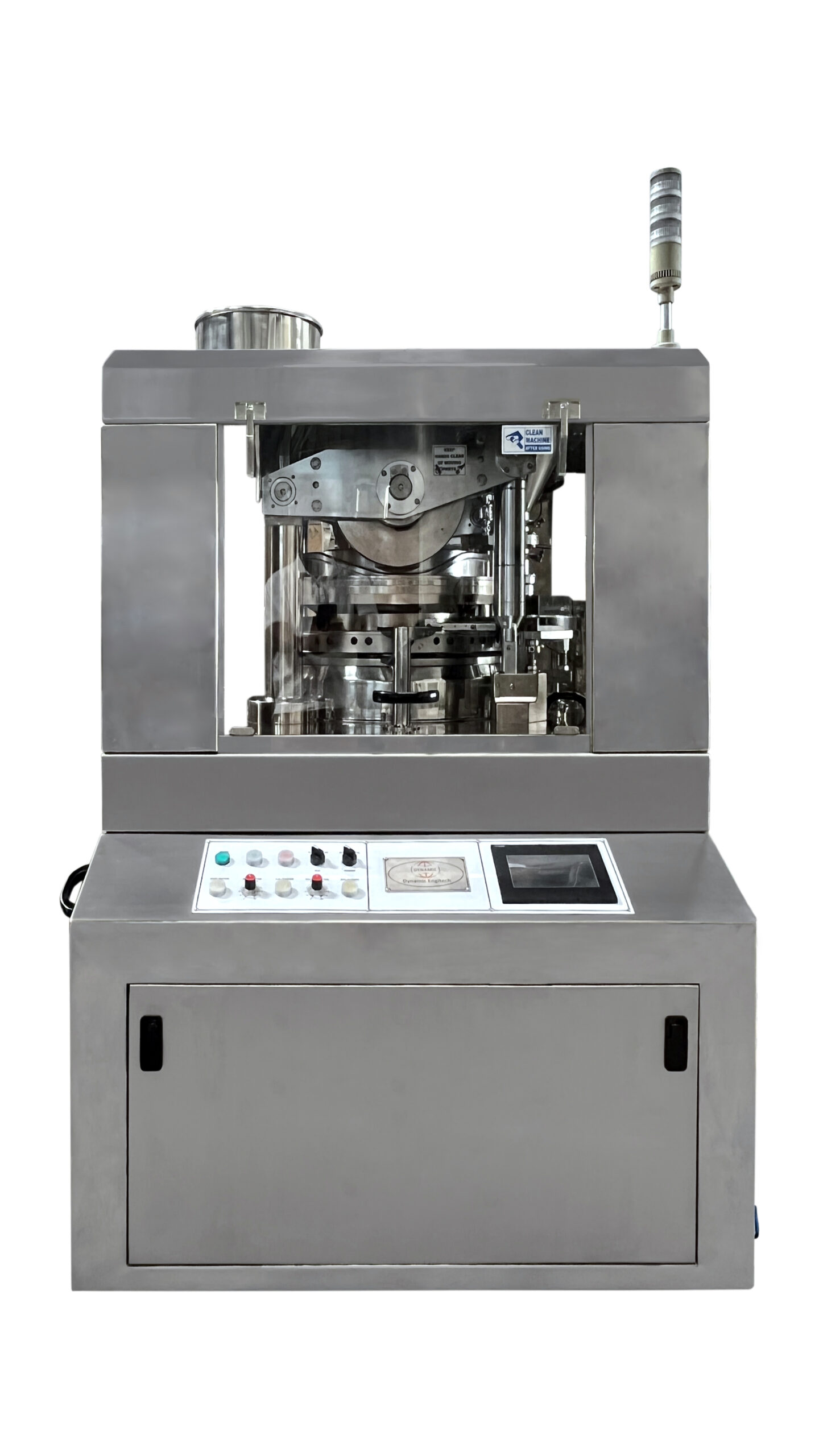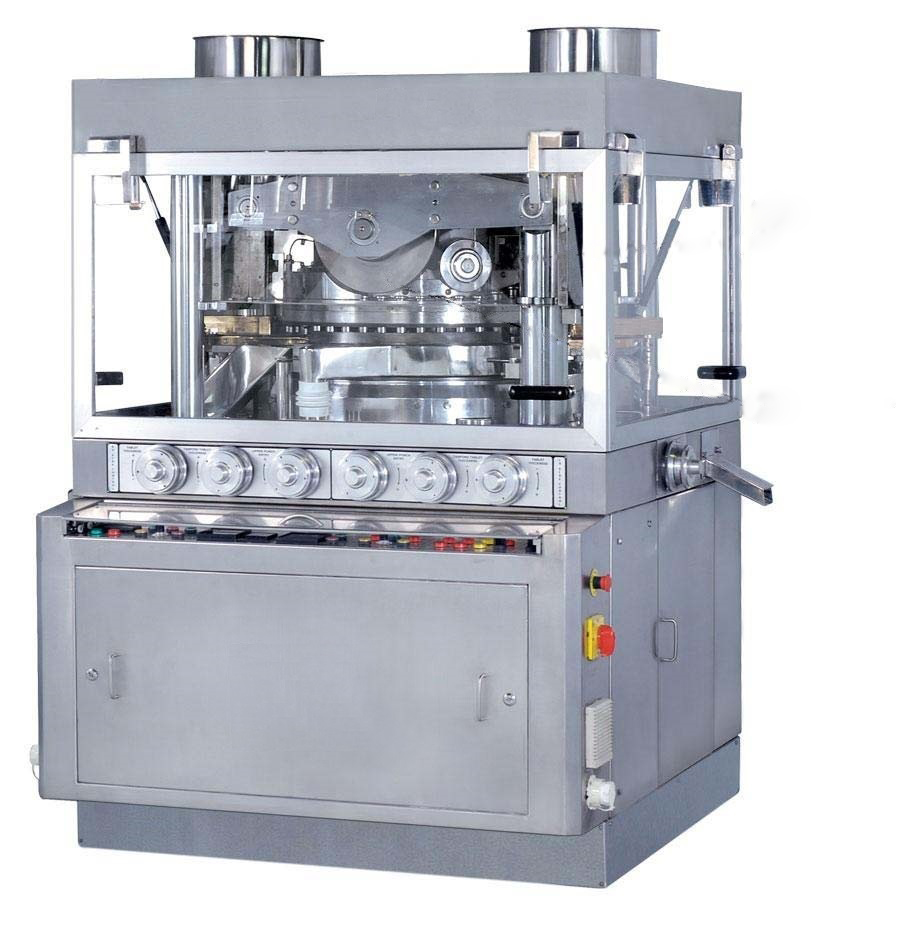Simple and Rotary Compression Machine: What’s the Difference?
Do you know how the tablets and the candies are made? It is made by compression of raw materials like powders or granules. This is made possible by a tablet press machine. A tablet press machine produces tablets, pills, and candies by compressing granulated powder with high pressure. Tablet press machines are an important part of any pharmaceutical or food-made company producing tablets and candies in various shapes and designs. These tablet press machines work by compressing weight on the powder entered by a hole.
There are two types of tablet press machines that are very famous for their work in different sizes of productions – single tablet press machines and rotary tablet press machines. A single-punch pill press machine is ideal for small production areas using a single set of tooling, a die & a pair of upper and lower punches. On the other hand, a rotary tablet press machine is ideal for large-scale production, using multiple tooling stations that rotate to compress powder and form tablets. In this article, we will talk about the single tablet press machine and rotary tablet press machine. Let’s dive in.
Differences Between Single Punch and Rotary Tablet Compression Machines
Both of the machines work differently and have different capacities for tablet making. Let’s understand the difference between Simple and Rotary Compression Machines.
Single Punch Tablet Presses
A single-punch tablet Press is a tablet press that forms tablets through a single compaction process. Single Punch Tablet Presses, also known as single station tablet presses, are a traditional form of tablet manufacturing equipment. A single-punch tablet Press refers to a tablet press designed for tablet production in the pharmaceutical industry and related sectors. These machines operate on a simple principle where a single punch compresses the powder material into tablets. The process involves a series of steps, including powder filling, compression, and ejection.
Key Features of Single Punch Tablet Press Machine
A single tablet press machine gives benefits in various ways such as operation, versatility, flexibility, and many more. Here are some key features of a single tablet press machine:
Operation
Single Punch Tablet Presses typically operate with a single set of tools, consisting of punches and dies, to form tablets.
Compact Design
These machines are known for their relatively compact and simple design compared to rotary presses. This makes them suitable for smaller-scale production environments.
Versatility
Single Punch Tablet Presses offer versatility in tablet manufacturing with different formulations and characteristics. They are suitable for smaller batches and frequent product changes.
Formulation Flexibility
Due to their design, single-punch tablet Presses allow flexibility in processing various powder formulations, making them ideal for pharmaceutical companies working with diverse products.
Lower Production Output
Although efficient, Single Punch Tablet Presses generally have lower tablet production output compared to rotary presses. As a result, they are more suitable for applications with moderate production demands.
Ease of Operation
Single Punch Tablet Presses are often easier to operate and maintain, making them suitable for environments where simplicity is a priority.
Batch Production
These machines are suitable for batch production processes where specific quantities of tablets are required for a particular formulation or product.
Limitations
With the beneficial features, this machine has some limitations too. Here are some of the limitations of a Single Tablet Press Machine:
Lower Production Output
One of the main limitations is the lower production output compared to rotary machines. Single Punch Tablet Presses are generally not as efficient for large-scale production.
Less Suitable for Continuous Production
These machines are designed for batch production processes. If continuous and uninterrupted production is required, a rotary press may be more suitable.
Limited Automation
Single Punch Tablet Presses may have limited automation features compared to rotary machines. This limitation can affect efficiency and operator workload.
Longer Production Time
Due to the nature of their single-station operation, the production time per tablet may be longer compared to rotary machines operating with multiple stations simultaneously.
Challenges with Complex Formulations
Processing complex formulations or those requiring multiple compression stages may be more challenging with Single Punch Tablet Presses. Rotary machines often handle complex formulations more efficiently.
Energy Consumption
Depending on the design and age of the machine, Single Punch Tablet Presses may have higher energy consumption per tablet produced compared to newer and more efficient equipment.
Rotary Tablet Press Machine
The Rotary Tablet Press machine makes tablets through multiple stations and is an ideal choice for large-scale production businesses. With a higher tablet output capacity, these machines can produce a large number of tablets very fast. Rotary Tablet Press Machines are mostly used for higher production in the pharmaceutical industry and can also be used for food production like toffees and candies. These machines operate on multiple punches to compress the powder material into tablets. The process involves a series of steps, including powder filling, compression, and ejection.
Key Features of Rotary Tablet Press Machine
Rotary Tablet Press Machine gives benefits in different ways such as multiple stations, continuous production, efficient automation, etc. Here are some of the key features of the rotary tablet press machine:
Multiple Stations
Unlike single-punch machines, rotary presses operate with multiple stations. Each station consists of a set of punches and dies for the simultaneous compression of tablets.
Continuous Production
Rotary machines operate continuously in a circular motion, allowing for a consistent and uninterrupted tablet production process.
High Production Output
Rotary tablet presses are designed for large-scale production and are suitable for industries with substantial tablet manufacturing needs.
Efficient Automation
These machines often feature advanced automation capabilities for precise control over the compression process. Automation contributes to higher efficiency and reduced operator workload.
Suitability for Complex Formulations
Rotary presses excel in handling complex formulations and multiple compression stages. This makes them suitable for pharmaceutical products with intricate requirements.
Shorter Production Time per Tablet
The multiple stations in rotary machines allow for the simultaneous production of several tablets, resulting in a shorter production time per tablet compared to single punch machines.
Efficient Tool Changeover
Rotary machines typically offer faster and more efficient tool changeovers, facilitating the transition between different tablet formulations.
Space Efficiency
Although larger than single-punch machines, rotary presses are efficient in terms of space utilization, especially considering their high production capacity.
Adaptability to Various Tablet Shapes
Rotary machines can be adapted to produce tablets in various shapes and sizes, providing flexibility to meet diverse market demands.
Continuous Monitoring and Control
Modern rotary tablet presses are often equipped with sophisticated monitoring and control systems, ensuring consistent tablet quality and production efficiency.
Limitations
The rotary tablet press machine also has some limitations. Here are some of them:
High Initial Investment
Rotary tablet presses tend to be more costly to acquire and install than single punch machines, making them less accessible for smaller-scale operations.
Complex Maintenance
The complexity of rotary machines may involve more intricate maintenance requirements. Specialized knowledge and training may be necessary for proper maintenance.
Tooling Costs
The tools (punches and dies) for rotary machines can be expensive. Changing tools for different tablet formulations may involve additional costs and downtime.
Choosing the Right Machine
- The choice between a single-punch tablet press and a rotary tablet press depends on several factors such as Production scale, Speed requirements, and Budgetary limitations.
- Small to medium pharmaceutical companies with diverse formulations may find single-punch machines to be a cost-effective and versatile solution.
- Large-scale manufacturers with high production demands may opt for the efficiency and automation of rotary tablet presses despite the initial cost.
Conclusion
In conclusion, while rotary tablet presses offer unmatched efficiency and productivity for large-scale tablet manufacturing, it is crucial to weigh their advantages against potential limitations. The decision between single punch and rotary tablet presses should be guided by the unique needs of the operation, budget considerations, and production scale. Recognizing these factors allows for a strategic decision that aligns with the goals of pharmaceutical or related industries, ensuring a harmonious balance between advanced technology and practical operational requirements.
Related Blogs
- How To Select Tooling Punches And Dies For Tablet Press Machines
- 10 Must-Have Accessories for Tablet Press Machine
- Types of Tablet Press Machines
- 10 Best Tablet Compression Machines for Pharma Companies
- Expert’s Guide For Buying the Right Tablet Press Machines
- Simple and Rotary Compression Machine: What’s the Difference?













